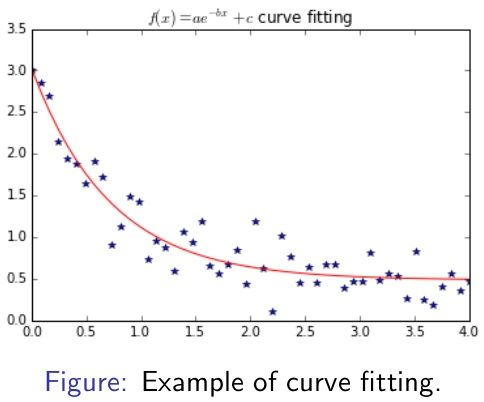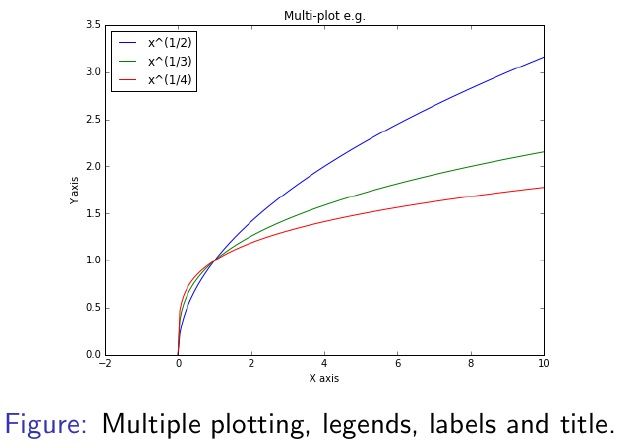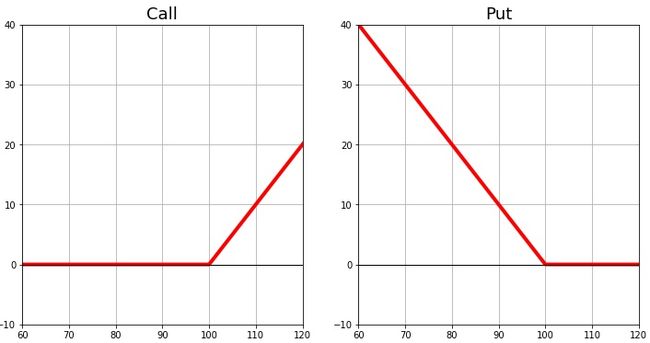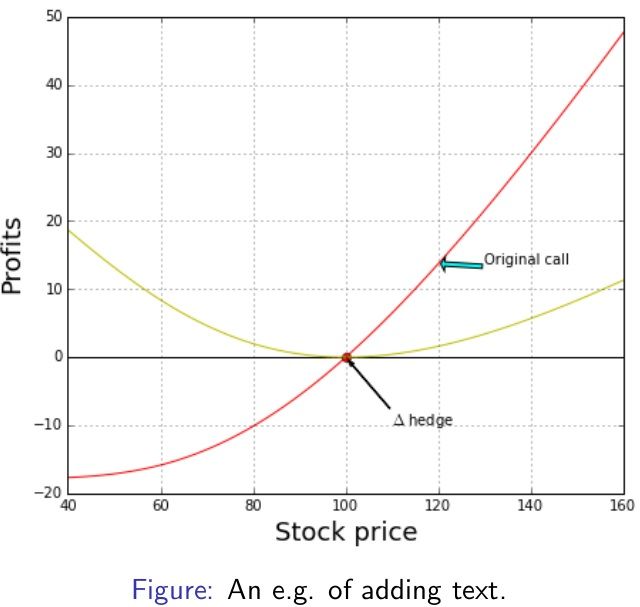Day2,即第二篇主要是讲一些偏计算的Library的使用,也就是numpy,scipy,sympy和matplotlib。
前言:
首先,非常感谢Jiang老师将其分享出来!本课件非常经典!
经过笔者亲测,竟然确实只要三天,便可管中窥豹洞见Python及主要库的应用。实属难得诚意之作!
其次,只是鉴于Jiang老师提供的原始课件用英文写成,而我作为Python的爱好者计算机英文又不太熟练,讲义看起来比较慢,为了提高自学课件的效率,故我花了点时间将其翻译成中文,以便将来自己快速复习用。
该版仅用于个人学习之用。
再次,译者因工作中需要用到数据分析、风险可视化与管理,因此学习python,翻译水平有限,请谅解。
在征得原作者Yupeng Jiang老师的同意后,现在我将中文版本分享给大家。
作者:Dr.Yupeng Jiang
- 伦敦大学学院 数学系 (全球顶尖大学,世界排名第7 《2018QS世界大学排名》,英国第3名)
- 2016年6月5日
- [原版课件来自] https://zhuanlan.zhihu.com/p/21332075
- [中文版的说明] https://zhuanlan.zhihu.com/p/29184240
翻译:Murphy Wan
大纲( Outline)
-
第1天:Python和科学编程介绍。 Python中的基础知识:
- 数据类型
- 控制结构
- 功能
- I/O文件
第2天:用Numpy,Scipy,Matplotlib和其他模块进行计算。 用Python解决一些数学问题。
第3天:时间序列:用Pandas进行统计和实际数据分析。 随机和蒙特卡罗。
------------------------------以下为英文原文-------------------------------------
- Day 1: Introduction to Python and scientific programming. Basics in Python: data type, contro structures, fu nctions, l/O file.
- Day 2: Computation with Numpy, Scipy, Matplotlib and other modules. Solving some maths problems with Python.
- Day 3: Time series: statistics and real data analysis with Pandas. Stochastics and Monte Carlo.
第二天的内容
Import modules
Numpy
Scipy
Matplotlib
Sympy
导入模块 (Import modules)
- 可以通过输入import关键字来导入模块
import numpy
- 或者使用简称,即将模块通过as关键字来命名一个简称
import numpy as np
- 有时您不必导入整个模块,就像下面一样:
from scipy.stats import norm
------------------------------以下为英文原文-------------------------------------
- One can import a module by typing
import numpy
- or for short by
2import numpy as np
- Sometimes you do not have to import the whole module, like
from scipy.stats import norm
练习 (Exercise)
- 尝试导入模块时间,并使用它来获取计算机运行特定代码所需的时间。
import timeit
def funl (x, y):
return x**2 + y**3
t_start = timeit.default_timer()
z = funl(109.2, 367.1)
t_end = timeit.default_timer()
cost = t_end -t_start
print ( 'Time cost of funl is %f' %cost)
------------------------------以下为英文原文-------------------------------------
- Try to import the module timeit and use it to obtain how long you computer takes to run a specific code.
import timeit
def funl (x, y):
return x**2 + y**3
t_start = timeit.default_timer()
z = funl(109.2, 367.1)
t_end = timeit.default_timer()
cost = t_end -t_start
print ( 'Time cost of funl is %f' %cost)
我们会遇到的模块
NumPy:多维数组的有效操作。 高效的数学函数。
Matplotlib:可视化:2D和(最近)3D图
-
SciPy:大型库实现各种数值算法,例如:
- 线性和非线性方程的解
- 优化
- 数值整合
Sympy:符号计算(解析的 Analytical)
Pandas:统计与数据分析(明天)
------------------------------以下为英文原文-------------------------------------
Modules we will encounter
- NumPy: Efficient manipulation of multidimensional arrays. Efficient mathematical functions.
- Matplotlib: Visualisations: 2D and (recently) 3D plots
- SciPy: Large library implementing various numerical algorithms, e.g.:
- solution of linear and nonlinear equations
- optimisation
- numerical integration
- Sympy: Symbolic computation (Analytical).
- Pandas: Statistical and data analysis(tomorrow)
Numpy
ndarray类型
- NumPy提供了一种新的数据类型:ndarray(n维数组)。
- 与元组和列表不同,数组只能存储相同类型的对象(例如只有floats或只有ints)
- 这使得数组上的操作比列表快得多; 此外,数组占用的内存少于列表。
- 数组为列表索引机制提供强大的扩展。
------------------------------以下为英文原文-------------------------------------
The ndarray type
-
NumPy provides a new data type: ndarray (n-dimensional array).
- Unlike tuples and lists, arrays can only store objects of the same type (e.g. only floats or only ints)
- This makes operations on arrays much faster than on lists; in addition, arrays take less memory than lists.
- Arrays provide powerful extensions to the list indexing mechanism.
创建ndarray
- 我们导入Numpy(在脚本的开头或终端):
import numpy as np
- 然后我们创建numpy数组:
In [1] : np.array([2, 3, 6, 7])
Out[l] : array([2, 3, 6, 7])
In [2] : np.array([2, 3, 6, 7.])
Out [2] : array([ 2., 3., 6., 7.]) <- Hamogenaous
In [3] : np.array( [2, 3, 6, 7+1j])
Out [3] : array([ 2.+0.j, 3.+0.j, 6.+0.j, 7.+1.j])
------------------------------以下为英文原文-------------------------------------
Create the ndarray
- We import Numpy (at the beginning of the script or in the terminal):
import numpy as np
- Then we create numpy arrays:
In [1] : np.array([2, 3, 6, 7])
Out[l] : array([2, 3, 6, 7])
In [2] : np.array([2, 3, 6, 7.])
Out [2] : array([ 2., 3., 6., 7.]) <- Hamogenaous
In [3] : np.array( [2, 3, 6, 7+ij])
Out [3] : array([ 2.+0.j, 3.+0.j, 6.+0.j, 7.+1.j])
创建均匀间隔的数组
- arange:
in[1]:np.arange(5)
Out [l]:array([0,1,2,3,4])
range(start, stop, step)的所有三个参数即起始值,结束值,步长都是可以用的 另外还有一个数据的dtype参数
in[2]:np.arange(10,100,20,dtype = float)
Out [2]:array([10.,30.,50.,70.,90.])
- linspace(start,stop,num)返回数字间隔均匀的样本,按区间[start,stop]计算:
in[3]:np.linspace(0.,2.5,5)
Out [3]:array([0.,0.625,1.25,1.875,2.5])
这在生成plots图表中非常有用。
- 注释:即从0开始,到2.5结束,然后分成5等份
多维数组矩阵 (Matrix by multidimensional array)
In [1] : a = np.array([[l, 2, 3] [4, 5, 6]])
^ 第一行 (Row 1)
In [2] : a
Out [2] : array([[l, 2, 3] , [4, 5, 6]])
In [3] : a.shape #<- 行、列数等 (Number of rows, columns etc.)
Out [3] : (2,3)
In [4] : a.ndim #<- 维度数 (Number of dimensions)
Out [4] : 2
In [5] : a,size #<- 元素数量 (Total number of elements)
Out [5] : 6
形状变化 (Shape changing)
import numpy as np
a = np .arange(0, 20, 1) #1维
b = a.reshape((4, 5)) #4行5列
c = a.reshape((20, 1)) #2维
d = a.reshape((-1, 4)) #-1:自动确定
#a.shape =(4, 5) #改变a的形状
Size(N,),(N,1)和(1,N)是不同的!!!
- Size(N, )表示数组是一维的。
- Size(N,1)表示数组是维数为2, N列和1行。
- Size(1,N)表示数组是维数为2, 1行和N列。
让我们看一个例子,如下
例子 (Example)
import numpy as np
a = np.array([1,2,3,4,5])
b = a.copy ()
c1 = np.dot(np.transpose(a), b)
print(c1)
c2 = np.dot(a, np.transpose(b))
print(c2)
ax = np.reshape(a, (5,1))
bx = np.reshape(b, (1,5))
c = np.dot(ax, bx)
print(c)
使用完全相同的元素填充数组 (Filling arrays with identical elements)
In [1] : np.zeros(3) # zero(),全0填充数组
Out[l] : array([ 0., 0., 0.])
In [2] : np.zeros((2, 2), complex)
Out[2] : array([[ 0.+0.j, 0.+0.j],
[ 0.+0.j, 0.+0.j]])
In [3] : np.ones((2, 3)) # ones(),全1填充数组
Out[3] : array([[ 1., 1., 1.],
[ 1., 1., 1.]])
使用随机数字填充数组 (Filling arrays with random numbers)
- rand: 0和1之间均匀分布的随机数 (random numbers uniformly distributed between 0 and 1)
In [1] : np.random.rand(2, 4)
Out[1] : array([[ 0.373767 , 0.24377115, 0.1050342 , 0.16582644] ,
[ 0.31149806, 0.02596055, 0.42367316, 0.67975249l])
- randn: 均值为0,标准差为1的标准(高斯)正态分布 {standard normal (Gaussian) distribution with mean 0 and variance 1}
In [2]: np.random.randn(2, 4)
Out[2]: array([[ 0.87747152, 0.39977447, -0.83964985, -1.05129899],
[-1.07933484, 0.49448873, -1.32648606, -0.94193424]])
- 其他标准分布也可以使用 (Other standard distributions are also available.)
数组切片(1D) (Array sliciing(1D))
- 以格式start:stop可以用来提取数组的片段(从开始到不包括stop)
In [77]:a = np.array([0,1,2,3,4])
Out[77]:array([0,1,2,3,4])
In [78]:a [1:3] #<--index从0开始 ,所以1是第二个数字,即对应1到3结束,就是到第三个数字,对应是2
Out[78]:array([1,2])
- start可以省略,在这种情况下,它被设置为零(Notes:貌似留空更合适):
In [79]:a [:3]
Out[79]:array([0,1,2])
- stop也可以省略,在这种情况下它被设置为数组长度:
In [80]:a [1:]
Out[80]:array([1,2,3,4])
- 也可以使用负指数,具有标准含义:
In [81]:a [1:-1]
Out[81]:array([1,2,3]) # <-- stop为-1表示倒数第二个数
数组切片(1D)
- 整个数组:a或a [:]
In [77]:a = np.array([0,1,2,3,4])
Out[77]:array([0,1,2,3,4])
- 要获取,例如每个其他元素,您可以在第二个冒号后面指定第三个数字(步骤(step)):
In [79]:a [::2]
Out[79]:array([0,2,4])
In [80]:a [1:4:2]
Out[80]:array([l,3])
- -1的这个步骤可用于反转数组:
In [81]:a [::-1]
Out[81]:array([4,3,2,1,0])
数组索引(2D) (Array indexing (2D))
- 对于多维数组,索引是整数元组:(For multidimensional arrays, indices are tuples of integers:)
In [93] : a = np.arange(12) ; a.shape = (3, 4); a
Out[93] : array([[0, 1, 2, 3],
[4, 5, 6, 7],
[8, 9, 10, 11]])
In [94] : a[1,2]
Out[94] : 6
In [95] : a[1,-1]
Out[95] : 7
数组切片(2D):单行和列 (Array slicing (2D): single rows and columns)
- 索引的工作与列表完全相同:(Indexing works exactly like for lists:)
In [96] : a = np.arange(12); a.shape = (3, 4); a
Out[96] : array([[0, 1, 2, 3],
[4, 5, 6, 7],
[8, 9,10,11]])
In [97] : a[:,1]
Out[97] : array([1,5,9])
In [98] : a[2,:]
Out[98] : array([ 8, 9, 10, 11])
In [99] : a[1][2]
Out[99] : 6
- 不必明确提供尾随的冒号:(Trailing colons need not be given explicitly:)
In [100] : a[2]
Out[100] : array([8,9,10,11])
数组索引 (Array indexing)
>>> a[0,3:5]
array( [3,4] )
>>> a[4:,4:]
array([[44, 45],
[54, 55]])
>>> a[:,2]
array([2,12,22,32,42,52])
>>> a[2: :2, ::2]
array([[20, 22, 24]
[40, 42, 44]])
副本(copy)和视图(view)
- 采用标准的list切片为其建立副本
- 采用一个NumPy数组的切片可以在原始数组中创建一个视图。 两个数组都指向相同的内存。因此,当修改视图时,原始数组也被修改:
In [30] : a = np.arange(5); a
Out[30] : array([0, 1, 2, 3, 4])
In [31] : b = a[2:]; b
Out[31] : array([2, 3, 4])
In [32] : b[0] = 100
In [33] : b
Out[33] : array([l00, 3, 4])
In [34] : a
Out[34] : array([0,1,100,3,4])
副本和视图 (Copies and views)
- 为避免修改原始数组,可以制作一个切片的副本 (To avoid modifying the original array, one can make a copy of a slice:)
In [30] : a = np.arange(5); a
Out[30] : array([0, 1, 2, 3, 4])
In [31] : b = a[2:].copy(); b
Out[31] : array([2, 3, 4])
In [32] : b[0] = 100
In [33] : b
Out[33] : array([100, 3, 4])
In [34] : a
Out[34] : array([ 0, 1. 2, 3, 4])
矩阵乘法 (Matrix multiplication)
- 运算符 * 表示元素乘法,而不是矩阵乘法:(The * operator represents elementwise multiplication , not matrix multiplication:)
In [1]: A = np.array([[1, 2],[3, 4]])
In [2]: A
Out[2]: array([[1, 2],
[3, 4]])
In [3]: A * A
Out[3]: array([[1, 4],
[9, 16]])
- 使用dot()函数进行矩阵乘法:(Matrix multiplication is done with the dot() function:)
In [4]: np.dot(A, A)
Out[4]: array([[ 7, 10],
[15, 22]])
--
矩阵乘法
- dot()方法也适用于矩阵向量(matrix-vector)乘法:
In [1]: A
Out[1]: array([[1, 2],[3, 4]])
In [2]: x = np.array([10, 20])
In [3]: np.dot(A, x)
Out[3]: array([ 50, 110])
In [4]: np.dot(x, A)
Out[4]: array([ 70, 100])
将数组保存到文件 (Saving arrays to files)
- savetxt()将表保存到文本文件。 (savetxt() saves a table to a text file.)
In [1]: a = np,linspace(0. 1, 12); a,shape ' (3, 4); a
Out [1] :
array([[ 0. , 0.09090909, 0.18181818, 0.27272727],
[ 0.36363636, 0.45454545, 0.54545455, 0.63636364],
[ 0.72727273, 0.81818182. 0.90909091, 1.]])
In [2] : np.savetxt("myfile.txt", a)
其他可用的格式(参见API文档) {Other formats of file are available (see documentation)}
save()将表保存为Numpy“.npy”格式的二进制文件 (save() saves a table to a binary file in NumPy ".npy" format.)
- In [3] : np.save("myfile" ,a)
- 生成一个二进制文件myfile .npy,其中包含一个可以使用np.load()加载的文件。 {produces a binary file myfile .npy that contains a and that can be loaded with np.load().}
将文本文件读入数组 (Reading text files into arrays)
loadtxt()将以文本文件存储的表读入数组。 (loadtxt() reads a table stored as a text file into an array.)
默认情况下,loadtxt()假定列是用空格分隔的。 您可以通过修改可选的参数进行更改。 以散列(#)开头的行将被忽略。 (By default, loadtxt() assumes that columns are separated with whitespace. You can change this by modifying optional parameters. Lines starting with hashes (#) are ignored.)
-
示例文本文件data.txt: (Example text file data.txt:)
|Year| Min temp.| Hax temp.|
|1990| -1.5 | 25.3|
|1991| -3.2| 21.2|
- Code:
In [1] : tabla = np.loadtxt("data.txt")
In [2] : table
Out[2] :
array ([[ 1.99000000e+03, -1.50000000e+00, 2.53000000e+01],
[ 1.9910000e+03, -3.2000000e+00, 2.12000000e+01]
Numpy包含更高效率的功能
-
Numpy包含许多常用的数学函数,例如:
- np.log
- np.maximum
- np.sin
- np.exp
- np.abs
在大多数情况下,Numpy函数比Math包中的类似函数更有效,特别是对于大规模数据。
Scipy (库)
SciPy的结构
- scipy.integrate - >积分和普通微分方程
- scipy.linalg - >线性代数
- scipy.ndimage - >图像处理
- scipy.optimize - >优化和根查找(root finding)
- scipy.special - >特殊功能
- scipy.stats - >统计功能
- ...
要加载一个特定的模块,请这样使用, 例如 :
- from scipy import linalg
线性代数 (Linearalgebra)
- 线性方程的解 (Solution of linear equations:)
import numpy as np
from scipy import linalg
A = np.random.randn(5, 5)
b = np.random.randn(5)
x = linalg.solve(A, b) # A x = b#print(x)
eigen = linalg.eig(A) # eigens#print(eigen)
det = linalg.det(A) # determinant
print(det)
- linalg的其他有用的方法:eig()(特征值和特征向量),det()(行列式)。{Other useful functions from linalg: eig() (eigenvalues and eigenvectors), det() (determinant). }
数值整合 (Numerical integration)
- integration.quad是一维积分的自适应数值积分的函数。 (integrate.quad is a function for adaptive numerical quadrature of one-dimensional integrals.)
import numpy as np
from scipy import integrate
def fun(x):
return np.log(x)
value, error = integrate.quad(fun,0,1)
print(value)
print(error)
用Scipy进行统计 (Statistics in Scipy)
- scipy具有用于统计功能的子库,您可以导入它 (scipy has a sub-library for statistical functions, you can import it by)
from scipy import stats
- 然后您可以使用一些有用的统计功能。 例如,给出标准正态分布的累积密度函数(Then you are able to use some useful statistical function. For example, the cummulative density function of a standard normal distribution is given like
- 这个包,我们可以直接使用它,如下: (with this package, we can directly use it like)
from scipy import stats
y = stats.norm.cdf(1.2)
优化:数据拟合 (Optimisation: Data fitting)
import numpy as np
from scipy.optimize import curve_fit
import matplotlib.pyplot as plt
def func(x, a, b, c):
return a * np.exp(-b * x) + c
x = np.linspace(0, 4, 50)
y = func(x, 2.5, 1.3, 0.5)
ydata = y+0.2*np.random.normal(size=len(x))
popt, pcov = curve_fit(func, x, ydata)
plt.plot(x, ydata, ’b*’)
plt.plot(x, func(x, popt[0], \
popt[1], popt[2]), ’r-’)
plt.title(’$f(x)=ae^{-bx}+c$ curve fitting’)
优化:根搜索 (Optimisation: Root searching)
import numpy as np
from scipy import optimize
def fun(x):
return np.exp(np.exp(x)) - x**2
# 通过初始化点0,找到兴趣0 (find zero of fun with initial point 0)
# 通过Newton-Raphson方法 (by Newton-Raphson)
value1 = optimize.newton(fun, 0)
# 通过二分法找到介于(-5,5)之间的 (find zero between (-5,5) by bisection)
value2 = optimize.bisect(fun, -5, 5)
Matplotlib
最简单的制图 (The simplest plot)
- 导入库需要添加以下内容
from matplotlib import pyplot as plt
- 为了绘制一个函数,我们操作如下 (To plot a function, we do:)
import numpy as np
import matplotlib.pyplot as plt
x = np.linspace(0, 10, 201)
#y = x ** 0.5
#plt.plot(x, y) # default plot
plt.figure(figsize = (3, 3)) # new fig
plt.plot(x, x**0.3, ’r--’) # red dashed
plt.plot(x, x-1, ’k-’) # continue plot
plt.plot(x, np.zeros_like(x), ’k-’)
- 注意:您的x轴在plt.plot函数中应与y轴的尺寸相同。 (Note: Your x-axis should be the same dimension to y-axis in plt.plot function.)
多个制图图例标签和标题 (Multiple plotting, legends, labels and title)
import numpy as np
import matplotlib.pyplot as plt
x = np.linspace(0, 10, 201)
plt.figure(figsize = (4, 4))
for n in range(2, 5):
y = x ** (1 / n)
plt.plot(x, y, label=’x^(1/’ \
+ str(n) + ’)’)
plt.legend(loc = ’best’)
plt.xlabel(’X axis’)
plt.ylabel(’Y axis’)
plt.xlim(-2, 10)
plt.title(’Multi-plot e.g. ’, fontsize = 18)
- Forinformations:See
help(plt.plot)
绘制子图 (Subplots )
import numpy as np’
import matplotlib.pyplot as plt
def pffcall(S, K):
return np.maximum(S - K, 0.0)
def pffput(S, K):
return np.maximum(K - S, 0.0)
S = np.linspace(50, 151, 100)
fig = plt.figure(figsize=(12, 6))
sub1 = fig.add_subplot(121) # col, row, num
sub1.set_title('Call', fontsize = 18)
plt.plot(S, pffcall(S, 100), 'r-', lw = 4)
plt.plot(S, np.zeros_like(S), 'black',lw = 1)
sub1.grid(True)
sub1.set_xlim([60, 120])
sub1.set_ylim([-10, 40])
sub2 = fig.add_subplot(122)
sub2.set_title('Put', fontsize = 18)
plt.plot(S, pffput(S, 100), 'r-', lw = 4)
plt.plot(S, np.zeros_like(S), 'black',lw = 1)
sub2.grid(True)
sub2.set_xlim([60, 120])
sub2.set_ylim([-10, 40])
- Figure: 一个子图的例子
(注释:这里,可以把Figure,即fig理解为一张大画布,你把它分成了两个子区域(sub1和sub2),然后在每个子区域各画了一幅图。)
在绘制的图上添加文本和注释 (Adding texts to plots)
import numpy as np
from scipy.stats import norm
import matplotlib.pyplot as plt
def call(S, K=100, T=0.5, vol=0.6, r=0.05):
d1 = (np.log(S/K) + (r + 0.5 * vol**2) \
*T) / np.sqrt(T) / vol
d2 = (np.log(S/K) + (r - 0.5 * vol**2) \
*T) / np.sqrt(T) / vol
return S * norm.cdf(d1) - K * \
np.exp(-r * T) * norm.cdf(d2)
def delta(S, K=100, T=0.5, vol=0.6, r=0.05):
d1 = (np.log(S/K) + (r + 0.5 * vol**2)\
*T) / np.sqrt(T) / vol
return norm.cdf(d1)
(Code continues:)
S = np.linspace(40, 161, 100)
fig = plt.figure(figsize=(7, 6))
ax = fig.add_subplot(111)
plt.plot(S,(call(S)-call(100)),’r’,lw=1)
plt.plot(100, 0, ’ro’, lw=1)
plt.plot(S,np.zeros_like(S), ’black’, lw = 1)
plt.plot(S,call(S)-delta(100)*S- \
(call(100)-delta(100)*100), ’y’, lw = 1)
(Code continues:)
ax.annotate(’$\Delta$ hedge’, xy=(100, 0), \
xytext=(110, -10),arrowprops= \
dict(headwidth =3,width = 0.5, \
facecolor=’black’, shrink=0.05))
ax.annotate(’Original call’, xy= \
(120,call(120)-call(100)),xytext\
=(130,call(120)-call(100)),\
arrowprops=dict(headwidth =10,\
width = 3, facecolor=’cyan’, \
shrink=0.05))
plt.grid(True)
plt.xlim(40, 160)
plt.xlabel(’Stock price’, fontsize = 18)
plt.ylabel(’Profits’, fontsize = 18)
两个变量的函数3D制图(3D plot of a function with 2 variables)
import numpy as np
import matplotlib.pyplot as plt
from matplotlib import cm
from mpl_toolkits.mplot3d import Axes3D
x, y = np.mgrid[-5:5:100j, -5:5:100j]
z = x**2 + y**2
fig = plt.figure(figsize=(8, 6))
ax = plt.axes(projection='3d')
surf = ax.plot_surface(x, y, z, rstride=1,\
cmap=cm.coolwarm, cstride=1, \
linewidth=0)
fig.colorbar(surf, shrink=0.5, aspect=5)
plt.title('3D plot of $z = x^2 + y^2$')
实验3:atplotlib (Lab 3: Matplotlib)
-
用蓝线绘制以下函数 (Plot the following function with blue line)
- 然后用红点标记坐标(1,2) (Then mark the coordinate (1, 2) with a red point.)
使用np.linspace()使t ∈ [0,2π]。 然后给 (Use np.linspace0 to make t ∈ [0,2π]. Then give)
- 针对X绘Y。 在这个情节中添加一个称为“Heart”的标题。 (Plot y against x. Add a title to this plot which is called "Heart" .)
-
针对x∈[-10,10], y∈[-10,10], 绘制3D函数 (Plot the 3D function for x∈[-10,10], y∈[-10,10])
Sympy
符号计算 (Symbolic computation)
到目前为止,我们只考虑了数值计算。 (So far, we only considered the numerical computation.)
Python也可以通过模块表征进行符号计算。(Python can also work with symbolic computation via module sympy.)
符号计算可用于计算方程,积分等的显式解。 (Symbolic computation can be useful for calculating explicit solutions to equations, integrations and so on.)
声明一个符号变量 (Declare a symbol variable)
import sympy as sy
#声明x,y为变量
x = sy.Symbol('x')
y = sy.Symbol('y')
a, b = sy.symbols('a b')
#创建一个新符号(不是函数
f = x**2 + 2 - 2*x + x**2 -1
print(f)
#自动简化
g = x**2 + 2 - 2*x + x**2 -1
print(g)
符号的使用1:求解方程 (Use of symbol 1: Solve equations)
import sympy as sy
x = sy.Symbol ('x')
y = sy.Symbol('y')
# 给定[-1,1] (give [-1, 1])
print(sy.solve (x**2 - 1))
# 不能证解决 (no guarantee for solution)
print(sy.solve(x**3 + 0.5*x**2 - 1))
# 用x的表达式表示y (exepress x in terms of y)
print (sy.solve(x**3 + y**2))
# 错误:找不到算法 (error: no algorithm can be found)
print(sy.solve(x**x + 2*x - 1))
符号的使用2:集成 (Use of symbol 2: Integration)
import sympy as sy
x = sy.Symbol('x')
y = sy.Symbol( 'y')
b = sy.symbols ( 'a b')
# 单变量 single variable
f = sy.sin(x) + sy.exp(x)
print(sy.integrate(f, (x, a, b)))
print(sy.integrate(f, (x, 1, 2)))
print(sy.integrate(f, (x, 1.0,2.0)))
# 多变量 multi variables
g = sy.exp(x) + x * sy.sin(y)
print(sy.integrate(g, (y,a,b)))
符号的使用3:分化 (Use of symbol 3: Differentiation)
import sympy as sy
x = sy.Symbol( 'x')
y = sy.Symbol( 'y')
# 单变量 (single variable)
f = sy.cos(x) + x**x
print(sy . diff (f , x))
# 多变量 (multi variables)
g = sy.cos(y) * x + sy.log(y)
print(sy.diff (g, y))
第二天结束,辛苦了
(传送门--去第三天)
(传送门--回第一天)















